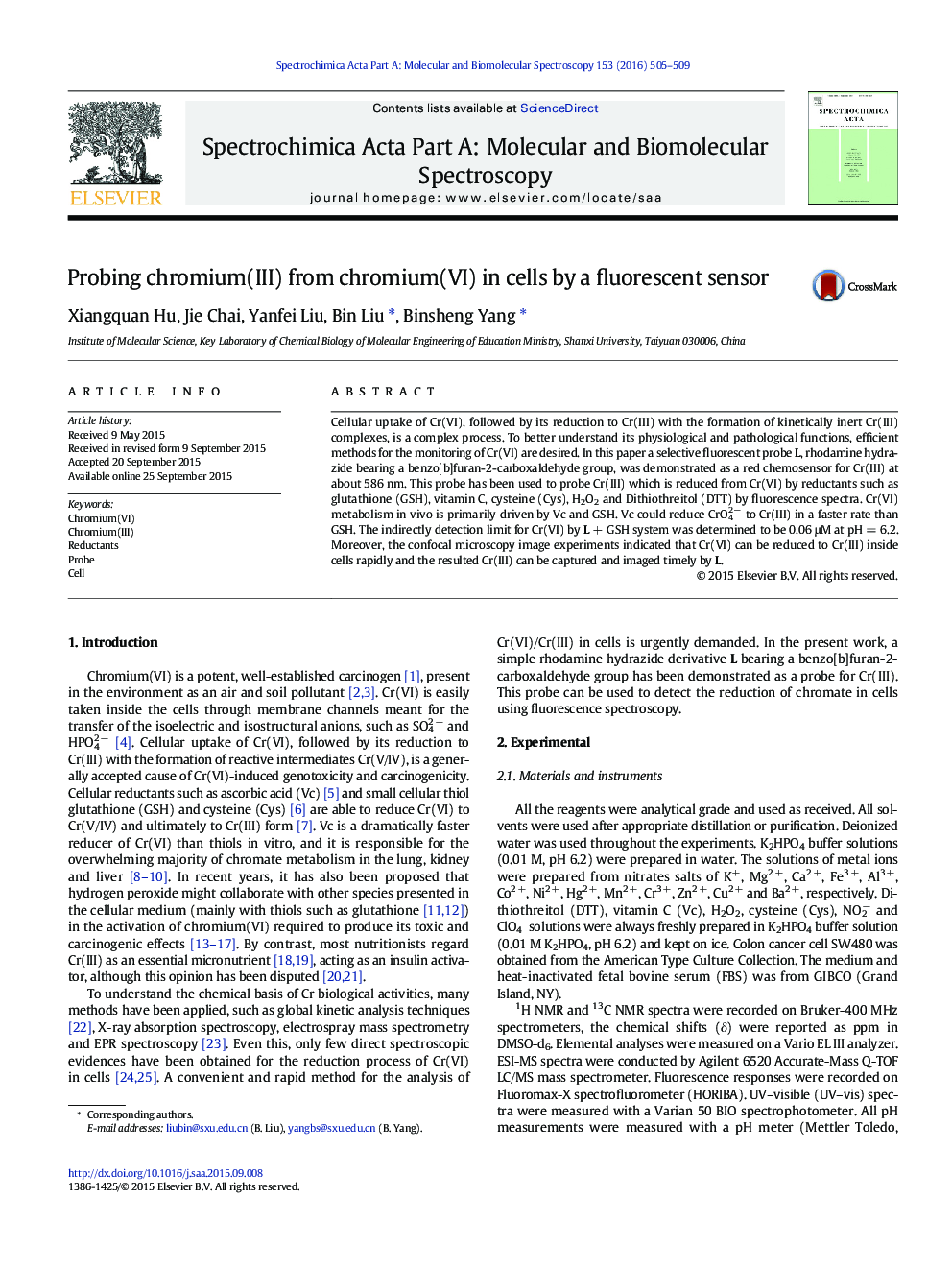| Article ID | Journal | Published Year | Pages | File Type |
|---|---|---|---|---|
| 1228755 | Spectrochimica Acta Part A: Molecular and Biomolecular Spectroscopy | 2016 | 5 Pages |
•One fluorescent probe L for Cr(III) was developed.•Cr(VI) is easily taken inside cells and rapidly reduced to Cr(III) in cells.•Cr(VI) metabolism in vivo is primarily driven by Vc and GSH.•The resulted Cr(III) can be captured and imaged timely by L in cells.
Cellular uptake of Cr(VI), followed by its reduction to Cr(III) with the formation of kinetically inert Cr(III) complexes, is a complex process. To better understand its physiological and pathological functions, efficient methods for the monitoring of Cr(VI) are desired. In this paper a selective fluorescent probe L, rhodamine hydrazide bearing a benzo[b]furan-2-carboxaldehyde group, was demonstrated as a red chemosensor for Cr(III) at about 586 nm. This probe has been used to probe Cr(III) which is reduced from Cr(VI) by reductants such as glutathione (GSH), vitamin C, cysteine (Cys), H2O2 and Dithiothreitol (DTT) by fluorescence spectra. Cr(VI) metabolism in vivo is primarily driven by Vc and GSH. Vc could reduce CrO42 − to Cr(III) in a faster rate than GSH. The indirectly detection limit for Cr(VI) by L + GSH system was determined to be 0.06 μM at pH = 6.2. Moreover, the confocal microscopy image experiments indicated that Cr(VI) can be reduced to Cr(III) inside cells rapidly and the resulted Cr(III) can be captured and imaged timely by L.
Graphical abstractCr(VI) is easily taken inside cells and rapidly reduced to Cr(III) in cells by cellular reductants. The resulted Cr(III) is able to be detected by probe L with off–on red fluorescence emissions timely.Figure optionsDownload full-size imageDownload as PowerPoint slide
